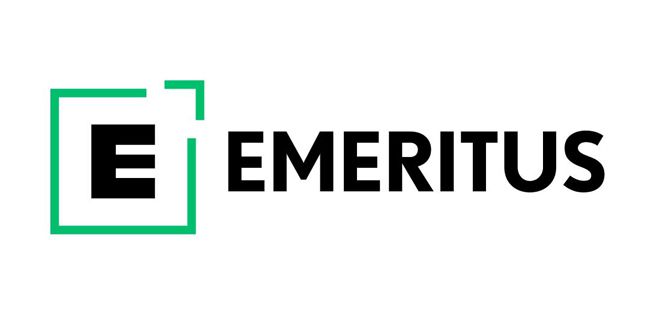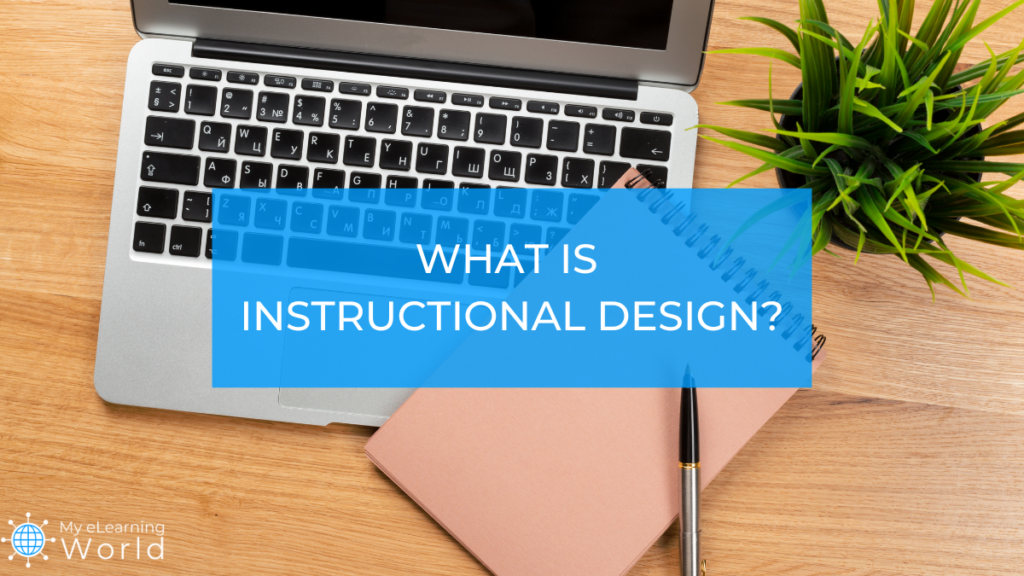If you’re thinking about pursuing a career as an instructional designer or you’re just someone interested in learning more about what it is, this guide will answer all of your questions.
As someone who’s been working in instructional design for nearly 20 years, I’m going to answer all of the following questions in depth in this guide:
- What is instructional design?
- What do instructional designers create and do?
- What are the components of instructional design?
- What are the different instructional design models?
- Why is instructional design important in education?
Watch Our Video Explanation
Before you get into the article, take a moment and check out our video that goes into detail on what exactly instructional design is!
What is Instructional Design?
Instructional design, or instructional system design (ISD), is the process of creating learning experiences in such a way that knowledge and skills are acquired and applied. The process involves assessing needs, devising a method, developing materials, and evaluating their usefulness.
Or as I like to explain it more simply when someone asks me, instructional design is the construction of instructional materials, modules, or lessons.
Instructional designers use academic theories and models of individuals’ learning and the cognitive processes that underpin the learning experience. These approaches ensure that instruction is as efficient as possible when transmitting knowledge or teaching skills to students.
To assure the quality of instruction, the instructional design process includes:
- Evaluating the specific needs of the students
- Establishing the outcome goals and key objectives of the training
- Developing and arranging assessment tasks
- Constructing teaching and learning activities
Some examples of instructional design models include ADDIE (Analysis, Design, Development, Implementation, and Evaluation), The Kirkpatrick Model, Bloom’s Taxonomy, ASSURE, and Situated Learning Theory.
What are the Components of Instructional Design?
While many different instructional design methods and procedures exist, many elements are the same. They include analysis, design, development, and evaluation.
1. Analysis
The parameters for building a course vary for different groups of learners. Adults, for example, are always interested in why they should learn anything and like to be self-directed. As a result, it’s critical to keep this in mind while creating a course for adults.
Similarly, I’ve found that building online courses for children differs greatly from designing training programs for adults because children rely on explanation.
2. Design
The student should properly appraise themselves by the end of the course. So how you design performance, conditions, and specified criteria should help them achieve the goal.
Well-defined objectives help the instructor select appropriate material, methods, media, and assessments.
3. Development
After the first two elements, the most crucial aspect is developing your material. It should contain a pre-planned exercise, a presentation, assessments, and comments from the students. Effective instructional materials should include easy-to-follow lessons, multimedia elements, and activities that help the student to understand and remember the content.
Learners are more likely to enroll in a course if knowledge is broken down into tiny, easy-to-understand chunks.
4. Evaluation
You can use a pre-test or one of the formative or summative evaluation criteria to determine whether the learner has grasped the material.
At the end of the course, learners should be assessed and given timely feedback to understand their knowledge levels.
It will help them determine whether or not to enroll in additional training courses to improve their abilities.
Instructional Design Models
To fulfill instructional goals, an instructional design model gives principles for organizing acceptable educative scenarios to accomplish instructional goals. Such models include ADDIE, Kirkpatrick, Bloom’s Taxonomy, and ASSURE.
Let’s look at some popular instructional design models.
The ADDIE Model
The ADDIE model is specifically created to enhance teaching with technology resources. It is presently employed in various instructional design procedures for e-learning.
It began in the mid-1970s as a military training project (USA) at the University of Florida (USA). However, it has expanded and adapted over time to meet current demands and is still very commonly used by instructional designers.
Its name is an abbreviation for the several stages of the process. As shown below, the scope is broad and flexible enough to meet any unique requirement:
Analysis Phase
During this phase, the designer’s focus is on the students to create a program that matches each student’s or participant’s degree of competence and intelligence. The analysis phase guarantees that what they already know is not repeated.
Instead, the focus is on topics and lessons that pupils have yet to investigate and learn. Instructors discriminate between what students already know and what they should know after finishing the course during this phase.
Design Phase
How will you present the course? This is when you put together the structural framework that will form the program you’re working on.
It entails having clear ideas on the strategy, approach, and path forward, as well as the deadlines to reach each goal and the resources to use.
Development Phase
This phase entails getting down to business and creating the course content and training materials. In the development stage, you prepare the content to be used and adapt it to the possibilities afforded by e-learning education once you decide on the style and manner you want to impart specific knowledge.
Implementation Phase
Once you established the goal, the path has been clearly outlined, and you can launch the course on your learning management system. It’s important to remember that all previous work has been done to ensure that this phase runs smoothly.
However, it is also critical that the method of instruction be in perfect alignment with the previously stated methodology and the tools employed.
Evaluation Phase
It is the final step where you will assess the effectiveness of the entire instructional design process. It comprises forms for students to appraise the applicability of the program they followed and the work of the e-learning teacher when putting it into practice.
The Kirkpatrick Model
The Kirkpatrick Methodology uses four tiers of criteria to measure aptitude, considering any type of training, whether informal or official.
This model was created by Dr. Donald Kirkpatrick (1924–2014) in the 1950s. The model can be used before, during, and after training to demonstrate the value of training to It is divided into four levels:
1. Reaction
This level aims to assess how people respond to the training model by asking questions that reveal the learners’ thinking.
Questions will determine whether the participant enjoyed their experience and found the program’s content relevant in their career.
2. Learning
This level of evaluation is used to determine how far learners have progressed in terms of competence, knowledge, and mindset.
Compared to level one, this level is significantly more difficult and time-consuming.
3. Transfer
This level examines how the learner’s behavior in class has changed after finishing the program.
Assessing the change allows you to see if the knowledge, mindset, or abilities given in the program are being applied in the learning environment.
4. Results
Level four measures the overall performance of the learning model by measuring elements such as involvement in the classroom and results, which is commonly regarded as the program’s primary purpose.
Bloom’s Taxonomy
Bloom’s Taxonomy is organized in a hierarchy, and like many other theories, it supports the premise that learning is based on existing knowledge and skills.
Each learning outcome must be met before going on to the next level.
- Remembering: entails extracting earlier knowledge from long-term memory and making connections to help with current comprehension.
- Understanding: entails employing ways to infer conclusions from existing data, such as summarizing and analyzing concepts, comparing message meaning, and interpreting both oral and written texts.
- Applying: entails putting the learning approach into action.
- Analyzing: requires breaking down information into valuable components while ensuring that each element is related to the ultimate purpose.
- Critiquing: material based on the learning criteria is part of evaluating.
- Creating: the concepts into a new structure to generate a meaningful thinking pattern.
ASSURE
ASSURE is an instructional design paradigm that aims to improve teaching and learning effectiveness. The abbreviation “ASSURE” stands for the different processes in the model.
Each stage is described in detail below.
A – Analyze Learners
The teacher should assess the characteristics of her students as the first stage in the procedure. There should be an emphasis on student characteristics linked to the targeted learning outcomes.
S – State Standards and Objectives
After analyzing the learner’s characteristics, the teacher must state the learning module’s criteria and objectives. This statement outlines what the students will accomplish due to the instruction.
S – Select Strategies, Technology, Media, and Materials
Given your learning objectives, you’ll need to choose instructional methodologies, technology, and media to help you achieve your goals.
U – Utilize Technology, Media, and Materials
This step in the ASSURE process is devising a strategy for implementing the technology, medium, and content you’ve chosen.
Like the rest of the instructional steps, you must ensure that your plans contribute to achieving the goals you’ve set.
R – Require Learner Participation
This step necessitates that you devise a strategy for actively engaging your students in the content you’re teaching. This needs to be determined at both the class and individual levels.
E – Evaluate and Revise
The final phase in the ASSURE procedure is where you evaluate the impact of your teaching on student learning. This involves reviewing your teaching methods and the technology, media, and resources you employed to make certain the learning objective is being achieved in the most effective manner.
Situated Learning Theory
Situated learning is based on psychology, sociology, cognitive science, and anthropology, among other topics. These learning encounters cannot take place in a vacuum. Situated learning theory highlights the importance of cognitive apprentices learning from experts.
When creating instruction, keep the following in mind:
- The most effective learning happens when learners are given an issue to solve and must think and act like experts.
- Realistic and situation-specific problems are required in learning.
- The instructor is a role model and coach instead of a lecturer.
- They’re also in charge of breaking down knowledge into small parts to help students solve challenges.
- Reflection, discussion, and evaluative thinking must be encouraged in the classroom.
- Even if most of the issues are group activities, students must actively participate in the scenario.
- The information learned through contextual and real-life activities is the “content” of a course, not neat bundles of information delivered by the instructor.
Why is Instructional Design Important in Education?
The goal of instructional design is to specify the fundamental factors that instructors must consider during the development of an educational program. The program will depend on the tools and resources available.
Instructional design is cost-effective
When it comes to establishing the curriculum plan, instructional designers use a thorough approach, zeroing in on the learning requirements that will yield the best results.
As a result, institutions avoid wasting money on training that does not change behavior. The cost of developing these tailored solutions, which are created from the ground up using instructional design principles, is swiftly repaid through effective learning that leads to results.
Instructional design produces measurable results
Instructional designers acquire information on institution objectives and ensure that learning objectives are aligned. It’s a chain reaction that starts at the top with set goals. Because these custom-built, research-backed solutions are designed to engage learners better, they frequently produce the best results.
Other Resources
- How to create an instructional design portfolio
- How to create an instructional design document
- What is an instructional designer?
- Instructional designer salary guide
- The best instructional design courses online
- Instructional design resume tips
- Common instructional designer interview questions
- Where to find instructional design jobs
- Instructional design job listings
- Instructional design career path
- Instructional design masters programs
- The best instructional design certificate programs
- Top instructional design bootcamps
- How to write an instructional design cover letter
Final Thoughts
Your tool for institutional change is instructional design. You may use it to engage your students, modify their behavior, and change the culture of your classrooms. The days of teaching content that causes student dissatisfaction are long gone.
It’s easier than ever for instructional designers to develop content that learners want to complete, with options ranging from gamification and story to social and microlearning.
If you’re interested in learning more about instructional design or pursuing a career in the field, you should consider enrolling in the Professional Certificate in Instructional Design program from Emeritus. This comprehensive course teaches everything from the basics of instructional design to popular instructional design theories and best practices for implementation in an online learning environment.
You can learn more about the program and request a brochure at this link.
 Emeritus Professional Instructional Design Certificate | Online Certificate Course
Emeritus Professional Instructional Design Certificate | Online Certificate Course
Gain firsthand expertise in instructional design principles and methodologies through this unique Professional Certificate program. Create impactful learning solutions and improve people's ability to learn.
The next class kicks off on October 22, 2024, so don't miss your chance to enroll now! Take advantage of early bird discounts leading up to the kickoff date:
20% off until September 3
15% off until September 24
10% off until October 15
- Elevating Your Virtual Presence: Why EMEET’s SmartCam S800 Stands Out in Modern Communication - 06/04/2025
- US Teachers Will Spend $3.35 Billion of Their Own Money on Classroom Expenses in 2025-25 School Year - 06/04/2025
- Report: Leveraging AI Tools Could Help US Teachers Avoid $43.4 Billion of Unpaid Overtime Work - 06/04/2025



